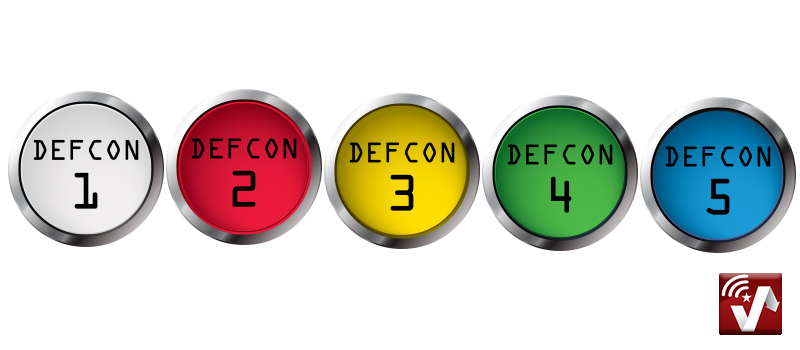

It indicates that attack upon the continental United States, Canada, or US installations in Greenland by hostile aircraft or missiles is considered probable, is imminent, or is taking place.ĭuring the Cuban Missile Crisis, the US Strategic Air Command was placed on DEFCON 2 for the first time in history, while the rest of US military commands (with the exception of the US Air Forces in Europe) went on DEFCON 3. forces overseas, or allied forces in any area, and is confirmed either by the commander of a unified or specified command or higher authority or an overt attack of any type is made upon the United States and is confirmed by the commander of a unified or specified command or higher authority.ĪIR DEFENSE EMERGENCY: Air defense emergency is an emergency condition, declared by the Commander in Chief, North American Aerospace Defense Command. By definition, other forces go to DEFCON 1 during an EMERGCON.ĭEFENSE EMERGENCY: Major attack upon U.S. In general terms, these are descriptions of DEFCONs:ĭEFCON 4 Normal, increased intelligence and strengthened security measuresĭEFCON 3 Increase in force readiness above normal readinessĭEFCON 2 Further Increase in force readiness, but less than maximum readinessĮMERGCONs are national level reactions in response to ICBM (missiles in the air) attack. DEFCONs are graduated to match situations of varying military severity, and are numbered 5,4,3,2, and 1 as appropriate.ĭEFCONs are phased increases in combat readiness. The 7 LERTCONs are broken down into 5 Defense Conditions (DEFCONs) and 2 Emergency Conditions (EMERGCONs).ĭefense readiness conditions (DEFCONs) describe progressive alert postures primarily for use between the Joint Chiefs of Staff and the commanders of unified commands.

In the event of a national emergency, a series of seven different alert Conditions (LERTCONs) can be called.


 0 kommentar(er)
0 kommentar(er)
